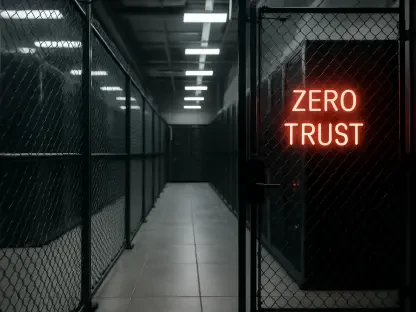Southwest Airlines has taken a bold step toward redefining the in-flight experience by rolling out free Wi-Fi for members of its Rapid Rewards program, a move that could signal a new standard in air travel connectivity. Announced in collaboration with a major telecommunications partner, this initiative eliminates the cost barrier that once stood between passengers and internet access at 30,000 feet. With the program already in effect as of late October, travelers enrolled in the loyalty program can now browse, stream, and stay connected without worrying about additional fees. This development not only enhances the passenger journey but also raises intriguing questions about how airlines might leverage technology to gain a competitive edge. As digital connectivity becomes an expectation rather than a luxury, Southwest’s decision could inspire other carriers to follow suit, potentially reshaping industry norms around in-flight amenities.
Elevating the Passenger Experience
Southwest’s introduction of complimentary in-flight Wi-Fi for Rapid Rewards members marks a significant enhancement to the overall travel experience, reflecting a deep commitment to customer satisfaction. This service, accessible to all loyalty program participants regardless of their mobile carrier, requires only a simple signup to unlock free internet on board. The airline conducted extensive fleetwide testing prior to the rollout, gathering overwhelmingly positive feedback from users who appreciated the seamless access to connectivity. With over 800 aircraft in its fleet now equipped to offer this perk, Southwest has positioned itself as a leader in prioritizing passenger convenience. The focus on a hassle-free journey, from booking to landing, is evident in this initiative, which aims to keep travelers engaged and productive even while in the air. Such a move underscores the growing importance of digital access as a key component of modern travel, setting a benchmark for what passengers might come to expect.
Beyond the immediate benefit of free internet, this program highlights Southwest’s broader strategy to innovate within the cabin environment. Leadership at the airline has emphasized that connectivity is just one of many planned upgrades aimed at creating a more enjoyable and efficient travel experience. The positive reception during testing phases suggests that passengers value staying connected without the burden of extra costs, a sentiment that could drive higher enrollment in the Rapid Rewards program. Additionally, the initiative aligns with evolving consumer expectations, where access to Wi-Fi is increasingly seen as a standard amenity rather than an optional extra. By integrating this service across its entire fleet, Southwest not only addresses current demands but also anticipates future needs, potentially attracting a wider customer base. This proactive approach to enhancing in-flight offerings could redefine how airlines balance cost and value in a highly competitive market.
Technology and Infrastructure Challenges
While the promise of free in-flight Wi-Fi is enticing, the underlying technology and infrastructure required to support this service present notable challenges for Southwest. The airline currently relies on Geosynchronous Earth Orbit satellite providers to deliver connectivity, a system that may face strain as usage surges with the removal of the previous per-session fee. Ensuring consistent performance across all flights, especially during peak travel times, will be critical to maintaining customer satisfaction. Southwest has acknowledged this concern and is investing heavily in network reliability, partnering with leading connectivity providers to upgrade equipment on newer aircraft. The goal is to create a robust system capable of handling increased demand without compromising speed or accessibility. This technological hurdle, if navigated successfully, could set a precedent for how airlines scale digital services to meet growing passenger expectations.
Another layer of complexity lies in the long-term sustainability of providing free Wi-Fi under a model that anticipates higher user engagement. As more passengers take advantage of the complimentary service, the pressure on bandwidth and data capacity will likely intensify, requiring ongoing monitoring and adjustments. Southwest’s collaboration with advanced satellite technology providers aims to address these issues by enhancing the infrastructure over time. However, the balance between offering a no-cost amenity and maintaining a high-quality connection remains delicate. If network performance falters, it could undermine the goodwill generated by this initiative, making it imperative for the airline to stay ahead of potential bottlenecks. The success of this program will largely depend on how effectively these technical challenges are managed, serving as a test case for the feasibility of widespread free in-flight connectivity across the industry.
Balancing Benefits and Privacy Concerns
The rollout of free Wi-Fi for Rapid Rewards members brings undeniable benefits, but it also introduces a subtle trade-off between connectivity and personal data privacy. Passengers accessing the service must share information through their loyalty accounts, allowing Southwest to collect data on usage patterns and bandwidth consumption as outlined in the program’s terms. This exchange of personal details for complimentary internet access mirrors a broader trend across industries like hospitality and retail, where customer insights are leveraged to refine services. While the airline has not delved deeply into privacy implications, the arrangement prompts travelers to consider how much information they are willing to share for the sake of staying connected. This dynamic reflects a growing tension in the digital age, where convenience often comes at the cost of personal data.
Delving deeper into this balance, the initiative underscores a critical conversation about how airlines might use customer information to enhance operations while maintaining trust. The data gathered through the Wi-Fi program could inform future improvements, such as optimizing network performance or tailoring in-flight offerings to passenger preferences. However, the lack of explicit focus on privacy safeguards in the announcement leaves room for speculation about how this information will be protected. For tech-savvy travelers, this trade-off may weigh heavily, especially in an era where data security is a paramount concern. Southwest’s ability to address these unspoken questions transparently could determine the long-term reception of the program. As the industry moves toward greater digital integration, finding equilibrium between innovative perks and safeguarding user information will remain a pivotal challenge for airlines aiming to stay competitive.
Reflecting on a Connected Journey
Looking back, Southwest Airlines’ decision to offer free in-flight Wi-Fi to Rapid Rewards members stood as a landmark moment in enhancing the travel landscape, blending technology with customer-centric innovation. The program, launched in late October, garnered widespread approval during its testing phase, signaling a strong appetite for connectivity among passengers. Yet, the journey also revealed underlying complexities, from managing network capacity to navigating the delicate balance of data privacy. As the airline addressed these challenges, it paved the way for a broader discussion on how digital amenities could shape air travel. Moving forward, the focus should shift to refining infrastructure investments and establishing clear privacy protocols to sustain trust. Exploring partnerships for cutting-edge satellite technology might further bolster reliability, ensuring that this initiative remains a cornerstone of passenger satisfaction in the years ahead.









